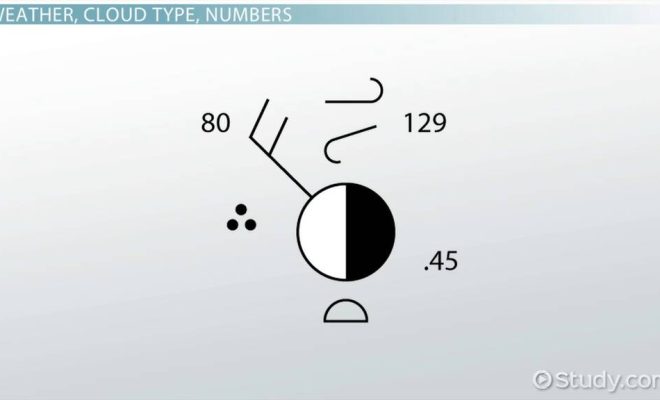How to Read Wind Barbs: 7 Steps

Introduction:
Weather enthusiasts, professional meteorologists, and pilots alike rely on wind barbs to gauge wind speeds and directions. These simple markings on weather maps convey important data concerning atmospheric conditions and can significantly improve your weather predictions. With just seven easy steps, you can confidently read wind barbs for any location.
Step 1: Locate Wind Barb Symbols on a Weather Map
On a weather map, look for small, arrow-like symbols that may be scattered across various regions or plotted at specific points. These are the wind barbs, and they represent the prevailing conditions at that particular location.
Step 2: Identify Wind Direction
The tail of a wind barb points in the direction from which the wind is blowing. If the tail is pointing towards the north, it indicates a northerly wind; similarly, if it’s pointing eastward, it signifies an easterly wind.
Step 3: Understand Wind Barb Components
Wind barbs consist of a “shaft” representing the primary wind direction accompanied by “feathers,” which indicate actual wind speed. Feathers are small lines that protrude from the shaft at distinct angles (typically horizontal or diagonal). Each feather type communicates a specific wind velocity.
Step 4: Decode Feather Types
Short feathers are drawn horizontally from the shaft and symbolize a 5-knot (approximately 5.8 mph) wind speed. Long feathers slant diagonally from the shaft at an upwards angle and signify 10 knots (about 11.5 mph). A “pennant” is a small triangular flag emerging from the shaft and represents 50 knots (roughly 57.5 mph).
Step 5: Calculate Wind Speed
Calculate total wind speed by adding up the values represented by each feather on a wind barb. For instance, if you see a barb with one long feather and two short feathers, the total wind speed at that location would be 20 knots (10 + 5 + 5).
Step 6: Decode Calm Winds
Calm winds or light winds with speeds less than 3 knots (approximately 3.5 mph) are represented by a small circle drawn at the endpoint of the shaft, where the direction would usually be specified.
Step 7: Practice and Refer to Resources
Familiarize yourself with wind barbs by studying weather maps available on meteorology websites or through mobile apps. Over time, you’ll become more proficient at reading these valuable symbols and using them to make informed weather observations.
Conclusion:
Now that you’ve mastered the seven steps to read wind barbs, you can tap into this valuable source of information to enhance your weather forecasting abilities. Whether for professional or recreational purposes, interpreting wind barbs can provide insights and guidance when dealing with varying atmospheric conditions.






